How to survive the paper industry kicked off the Paper & Pixel week of discussions at Documenta12 in Kassel. The first group of talks looked at the way the development of technology is influencing the publishing process and even allows independent magazine editors to survive. They face the threat created by pixels and toners by reinventing content, technical and economical strategies.
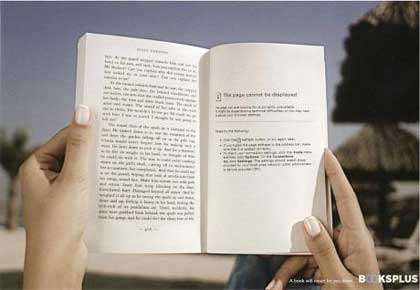 It is precisely the love for the speed of electrons, and an understanding of the potentials of networked media, that have inspired the cultural tactics of these magazines; from print-on-demand, collaborative editing, sharing content and knowledge, to surfing and playing up to new economic demands.
It is precisely the love for the speed of electrons, and an understanding of the potentials of networked media, that have inspired the cultural tactics of these magazines; from print-on-demand, collaborative editing, sharing content and knowledge, to surfing and playing up to new economic demands.
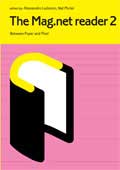 First intervention was by Alessandro Ludovico. Alessandro created the Neural magazine about new media art, electronics and hacktivism in 1993. He is also one of the co-founders of the Mag.net network (Mag.net reader 2, Between Paper and Pixel is out btw!), an advisor to the Documenta12 magazine and one of the hacktivists behind projects such as Google Will Eat Itself and Amazon Noir.
First intervention was by Alessandro Ludovico. Alessandro created the Neural magazine about new media art, electronics and hacktivism in 1993. He is also one of the co-founders of the Mag.net network (Mag.net reader 2, Between Paper and Pixel is out btw!), an advisor to the Documenta12 magazine and one of the hacktivists behind projects such as Google Will Eat Itself and Amazon Noir.
He started by showing the image you can see above, an ad from a book editor that gave the message that books, unlike your computer screen, would never let you down. There is no chance of ever opening a book and finding the message “This page cannot be displayed”.
With electronics and digital technology the paper industry knows that nothing will ever be the same again: real time publishing pervading the printed pages, reliability is a value regarded as more and more precious, disembodiment of the paper both on computer and mobile phone screens, etc. Yet, believes Alessandro, the immobility of the paper has something reassuring compared to pixel.
Since the end of the ’90s there has been countless announcements that new technologies (electronic paper or e-paper) would replace paper. Yet in 2007, this is still an alien object. Alessandro tested one of these electronic paper readers and he compared the feeling to holding a big palm top. Doesn’t replace the pleasure of holding, touching, smelling a book. And it is still quite expensive (around 600 euros).
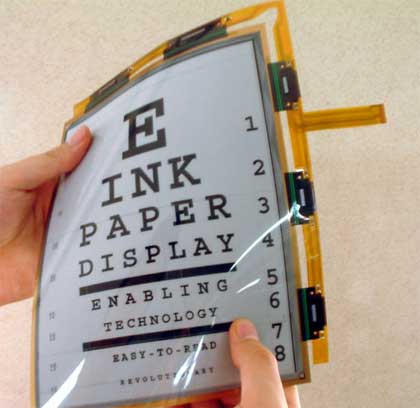
That kind of device would allow users to reduce physical space in their bookshelf while owning more, sharing, copying and storing much more content.
Alessandro then explained how the project Amazon Noir which he developed together with Paolo Cirio and UBERMORGEN.COM exploits the “search inside the book” feature of the online bookseller.
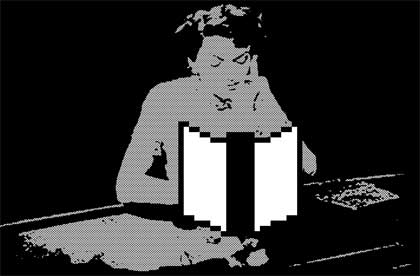
Paper is more persistent that the online text, believes the editor of Neural and publishers are wondering what to do with the web, how to exploit it for their own business. Today the electronic space par excellence is the web.
One of the latest strategies is to give away their magazines for free under a PDF format. A series of glossy, entertaining magazines do that today. They range from Business Week to Premiere. Why? First of all you have to register and by doing so you give them some very valuable information about yourself. Plus, PDF give away improves distribution and augments readership which in turn allows the publishers to sell ad space at a higher price.
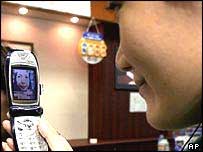 He also recalled the story of “Japan’s digital shoplifting plague” which has young girl take camera phone picture of a new hairstyle or a new dress they might spot while browsing a magazine in a shop. They then send the picture to all their friends and comment on it. The publishers of those magazines feel they are being cheated out of valuable sales and have issued posters which warn shoppers to be careful of their “magazine manners”.
He also recalled the story of “Japan’s digital shoplifting plague” which has young girl take camera phone picture of a new hairstyle or a new dress they might spot while browsing a magazine in a shop. They then send the picture to all their friends and comment on it. The publishers of those magazines feel they are being cheated out of valuable sales and have issued posters which warn shoppers to be careful of their “magazine manners”.
Free electronic magazines: either downloadable or simply viewable online. The later strategy is often adopted by experimental publicatins which might want to play with the aesthetics. Ex. Magnify, an underground design magazine which is structured like a standard paper magazine, it has similar graphics, it is not interactive at all, doesn’t exploit any of the features offered ny interactive media except the possibility of a wide distribution via the screen. It is like a never born paper mag.
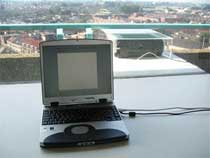
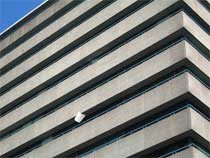
Alessandro showed an art installation called Pamphlet. Helmut Smits. It consists of a laptop, software and a printer placed on the edge of a building window. People can type a message on the laptop, press the ‘send’ button and a pamphlet with the message is printed and dropped from the 10th floor by the printer. To quote him: “The falling down paper and the resulting ‘pamphlet’ on the street symbolizes the relatively short distance from the personal production to the public enjoyment of a printed product, and how the traditional product parameters has been disrupted. The fascination of take-away paper is the same at the base of newspapers that are starting to stretch their role and nature with downloadable and printable last minute editions. These are highly customized on one key factor: the updating time. They are meant to be read offline, so enjoyed with a relative calm, but with the most stretched and feverish time of production. This is part of a larger need: to put the virtually and real-time produced content out of the screen to affect real life or be enjoyed in it.”
Last part of the presentation engaged with the recent phenomenon of “Print on demand“, a printing technology in which a copy is not created until after an order is received. The method allows the publisher to avoid the biggest cost of edition: printing. Any one can send their magazine or book to publish on the web. To Alessandro it is similar to what the photocopy machine was in the ’80s: enjoyable and simple just like paper is still today in his opinion.
Read Alessandro’s full text. And! there’s even a podcast of the whole discussion (via.)
